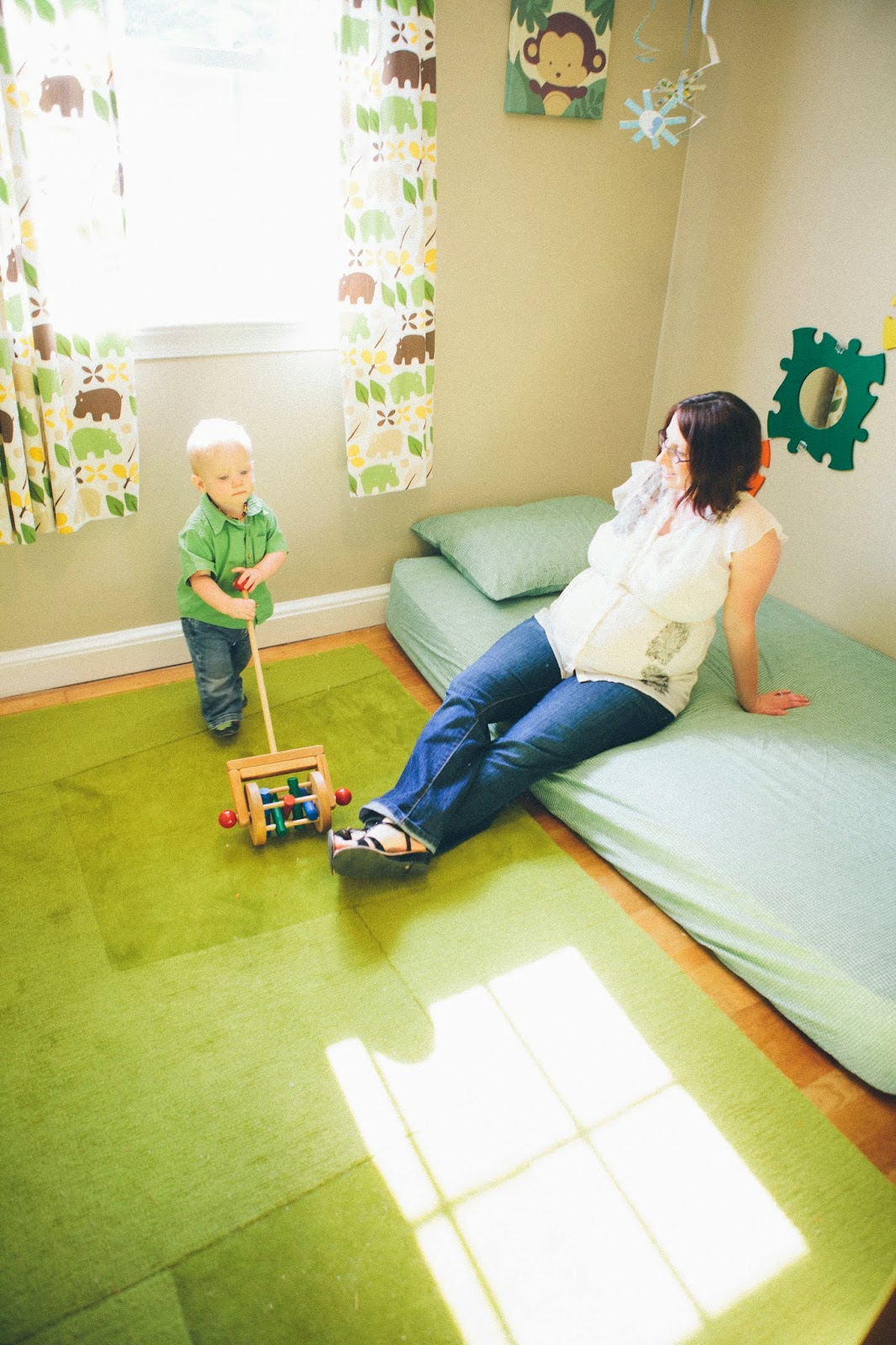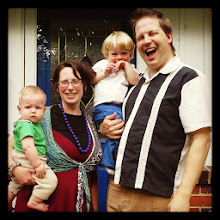How Do I Safely Bedshare With a Crawling or Rolling Baby?
One question I encounter regularly about extended cosleeping (specifically, bedsharing) is what to do when baby starts rolling or crawling. Here are some of our thoughts:
Observe your baby: Is your baby able to roll or is she a roller? Will you baby wake and wait for you, or start exploring right away? V was swaddled until he was nine months old. Although he could roll, he had no interest in rolling as locomotion. E, on the other hand, was able to roll at 7 weeks old and varied on loving and hating the swaddle, so we had no idea what to expect from him. He never rolled more than one flip in his sleep, though. Neither of our boys wake alone and start crawling. They wake and call/cry out for us. Thus, we have a degree of comfort in leaving them in our bed even if we are a room away.
Once you've observed your baby, here are several approaches to cosleeping:
Camp out with your baby
If possible, stay in bed with your baby and take some down time. Nap or read a book. Check Facebook on your phone or play a game on a tablet, or something I am fortunate enough to be able to do: grab a laptop and hammer out some work while watching over your sweet little one.
Move a mattress to the floor
A floor bed is a fancy name for putting a mattress on the floor. Some families move the family bed to the floor, others put a mattress on the floor just for the child.
We weren't up for moving our queen mattress to the floor. With my chronic pain issues, I like a bed that I can stand up from easily and Dave wasn't thrilled about it aesthetically, so we set up a twin mattress floor bed for V when he turned 9 months and started crawling. With E, we didn't get around to it until he was a year, and we could only fit a crib-sized mattress in the room. For us, the best space for this was in a separate room. With the floor bed model, we lay with baby until he falls asleep, then sneak away. We repeat the cosleeping cuddles in the floor bed for each night-waking until we are ready for sleep. Once in our own bed for the night, we bring baby to join us at his next night-waking. A floor bed should follow the same rules of safe bedsharing, like 1 pillow per adult. So, if you are leaving the bed remember that no adult=no pillows, so take the pillow with you. Also, since you cannot verify that a blanket will not go higher than baby's waist, forgo blankets until baby is older as well. (18 months to 2 years, for our kids.) The room should be babyproofed in case baby wakes and starts to explore.
 |
| V's Floor Bed (pillow introduced around 18 months) Photo by Heidi Daniels |
 |
| Room remodeled for two boys: twin mattress on the left & crib mattress of the right (no pillow or blankets until 18 months for Baby E) |
Your child doesn't have to sleep on a mattress. When my boys come to work with me, we do a variety of things from naps mats to putting a blanket right on the floor. My body isn't so thrilled about laying down on the hard ground with them until they fall asleep, but the kids never seem to mind having slept on the floor.
 |
| Nap mat & Lillebaby Eurotote (great for naps, unsafe as a baby carrier) |
 |
| Napping on a woven wrap |
Create a barrier for baby
A barrier can be something bought like a bed rail or something fabricated like a wall of pillows. I only feel comfortable with using pillows for an older baby who will easily move himself away if breathing is obstructed and putting pillows far enough from baby that he'd have to roll or crawl a distance to encounter them. Some people slide a pool noddle under a fitted sheet to create a small barrier. A favorite when we travel is pushing furniture (like high-backed chairs) against the side of the bed.
 |
| Pool noodle under fitted sheet |
Teach baby to climb off the bed safelyWe started to teach V the skill of sliding off the bed (feet-first, laying on his belly) at 10 months old, though he would not grasp it until a year old (and wouldn't be tall enough/confident enough to do it on his own until about 15 months). That said, teaching him and helping him do this showed him how to assess his own limitation and made us comfortable with letting him sleep on the high surface.
Pad the floor
On the chance baby falls off the bed, pad the floor around the bed with thick, non-fluffy blankets.
You might be tempted to pad the floor with mountains of pillows, but consider that if baby silently fell into the fluffy items his face could be obstructed.
Lower your bed frameSome bed frames can adjust lower. A thinner foundation is another option (e.g. platform instead of box spring).
Stay close and be awareWe rarely use a baby monitor because our house is so small, but this is one time when we plug in the monitor in because even the lightest rustle comes through if I need to be on the other side of the house. If I am working in the office adjacent to my bedroom, I keep both doors open so I can be aware of all the noises in the bedroom. As soon as I am aware of rustles, I feel out if it is time to greet my child before he fully awakens.
Disclaimer: Not all of these methods will be appropriate for every child or at every age. Use your own discretion when choosing how to care for your child. Staying with your child or utilizing one of the floor options are your safest bets.
Labels: Cosleeping, Parenting




0 Comments:
Post a Comment
Subscribe to Post Comments [Atom]
<< Home